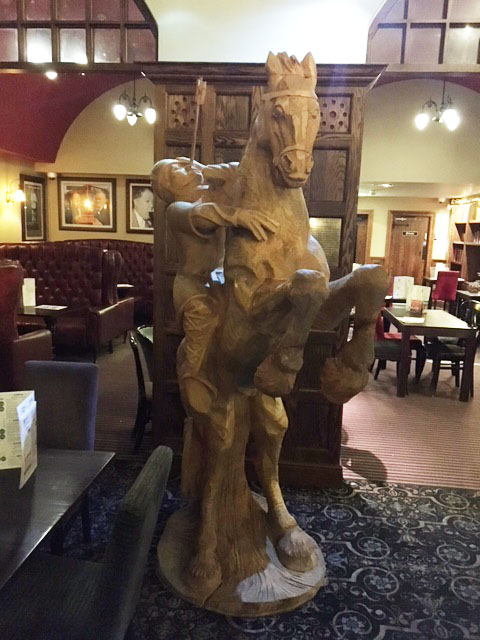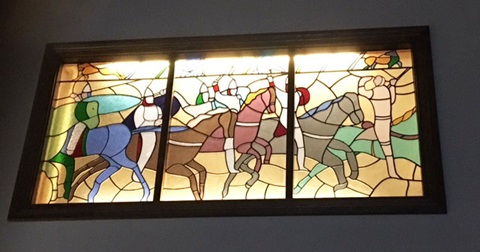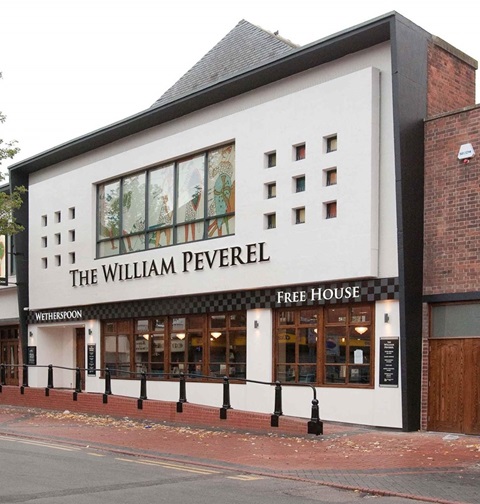Bulwell is probably named after the Bull Well, a spring to the north of the town in what was Bulwell Forest. ‘Bull’ is thought to be an ancient word for the bubbling of the water of the well. Another possibility is that ‘Bulla’ was a Saxon personal name. Recorded in the Domesday Book, compiled for William the Conqueror in 1086, Bulwell comprised two carucates of land (about 240 acres) belonging to the manor of William Peverel. Peverel, who was the son of the Conqueror, built the first Nottingham Castle.
Text about the history of the building.

The text reads: During the 1960s and 70s, the building that you are now in was Co-op supermarket. It was during this period that the present two storey façade was added to the red brick building that first opened its doors in 1911, as the Picture Palace.
It was built for Edwin Widdowson, a local man, who had a chemist’s shop in Main Street and lived on Hucknall Road. Four years later, Widdowson built the Olympia Theatre in the Market Place. The Olympia closed in 1952. The Picture Palace shut three years later.
Widdowson also built the former Bulwell Public Hall, at the corner of Market Place and Highbury Road. Built in 1894-95, the top floor of the hall was used for entertainments and film shows.
A statue inspired by Norman knights.


A stained-glass window entitled Knights in Battle, by RS Glass Design.

Commissioned by J D Wetherspoon for the William Peverel in 2011, the stained-glass panels above show Norman knights in battle, as depicted in the Bayeux Tapestry. William Peverel was a Norman knight, and is down in The Battle Abbey Roll to have fought at the Battle of Hastings.
External photograph of the building – main entrance.

Rick Clarke and Rachel Skinner of Harrison Ince Architects designed this pub for J D Wetherspoon.
If you have information on the history of this pub, then we’d like you to share it with us. Please e-mail all information to: pubhistories@jdwetherspoon.co.uk